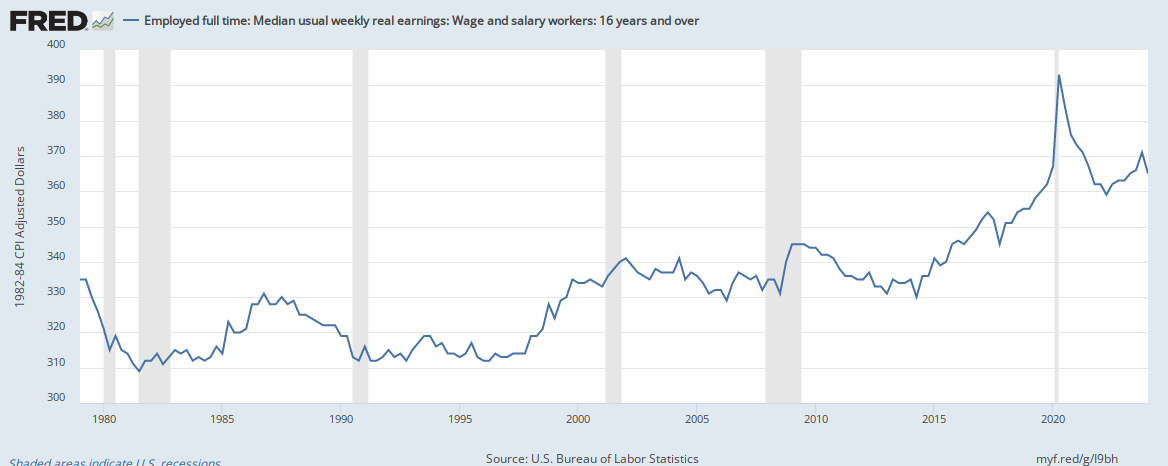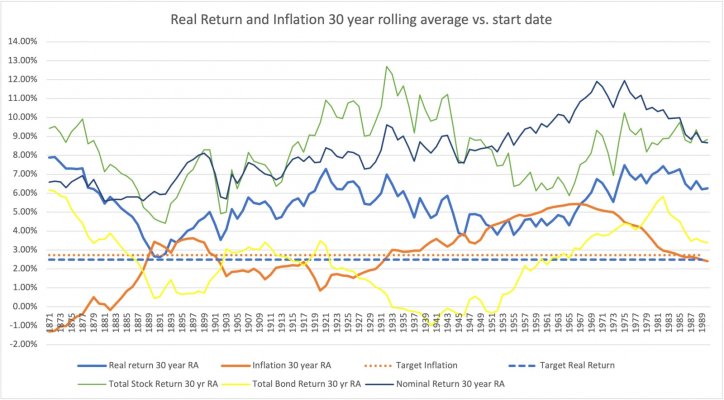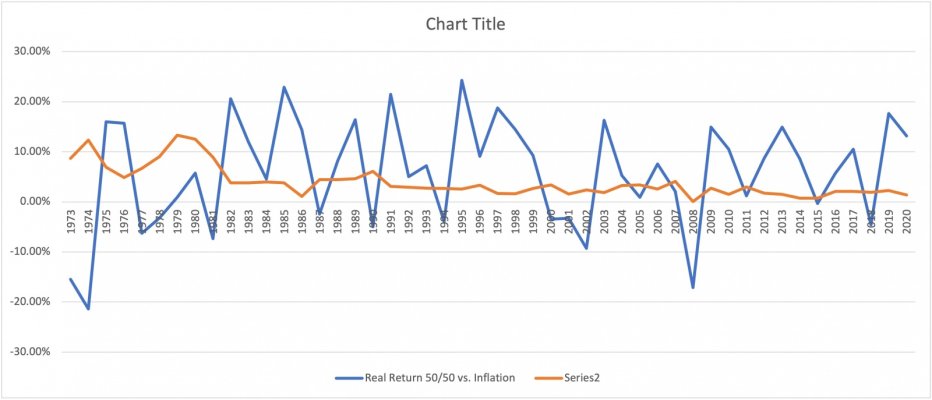I have been concerned with the effect of inflation and have watched some discussions that were showing the effect of inflation on your assets by focusing on the effective purchasing power of the total assets.
For example. $1,000,000 and 10% inflation
2021 $1,000,000
2022 $900,000
2023 $810,000
etc. with this being offset by the supposed rate of return on the assets.
I can see this being illustrative of the invisible drain of purchasing power by inflation, but it is different from the way I have been modeling inflation.
In some of my spreadsheets I have been making something along the lines of several columns for each asset class, say cash, stocks, bonds and assigning an expected rate of return to each class.
Each line would be a year, so I would add the previous year's earnings to get the asset value for the new line.
I would also have columns for expenses and taxes, which I would subtract from the cash column as I make each new line.
What I have been doing is to increase my projected expenses by the expected rate of inflation as I make each new line.
Given that my expenses are less than 3% of my total assets, it seems that the impact of inflation on the model is much less if I just apply inflation to my expenses.
If I subtract the rate of inflation from my total assets in order to represent the effective purchasing power of the future assets in today's dollars the effect is much more pronounced and very scary.
Do you think that using inflation simply to increase the projected annual expenses is the correct way to be modeling this?
Thanks.
Joe
For example. $1,000,000 and 10% inflation
2021 $1,000,000
2022 $900,000
2023 $810,000
etc. with this being offset by the supposed rate of return on the assets.
I can see this being illustrative of the invisible drain of purchasing power by inflation, but it is different from the way I have been modeling inflation.
In some of my spreadsheets I have been making something along the lines of several columns for each asset class, say cash, stocks, bonds and assigning an expected rate of return to each class.
Each line would be a year, so I would add the previous year's earnings to get the asset value for the new line.
I would also have columns for expenses and taxes, which I would subtract from the cash column as I make each new line.
What I have been doing is to increase my projected expenses by the expected rate of inflation as I make each new line.
Given that my expenses are less than 3% of my total assets, it seems that the impact of inflation on the model is much less if I just apply inflation to my expenses.
If I subtract the rate of inflation from my total assets in order to represent the effective purchasing power of the future assets in today's dollars the effect is much more pronounced and very scary.
Do you think that using inflation simply to increase the projected annual expenses is the correct way to be modeling this?
Thanks.
Joe



